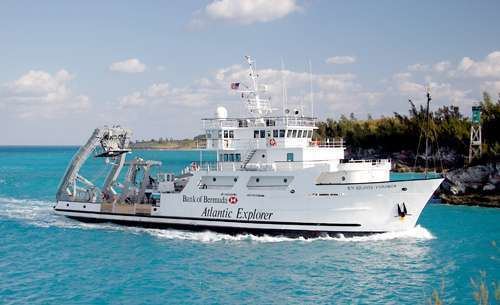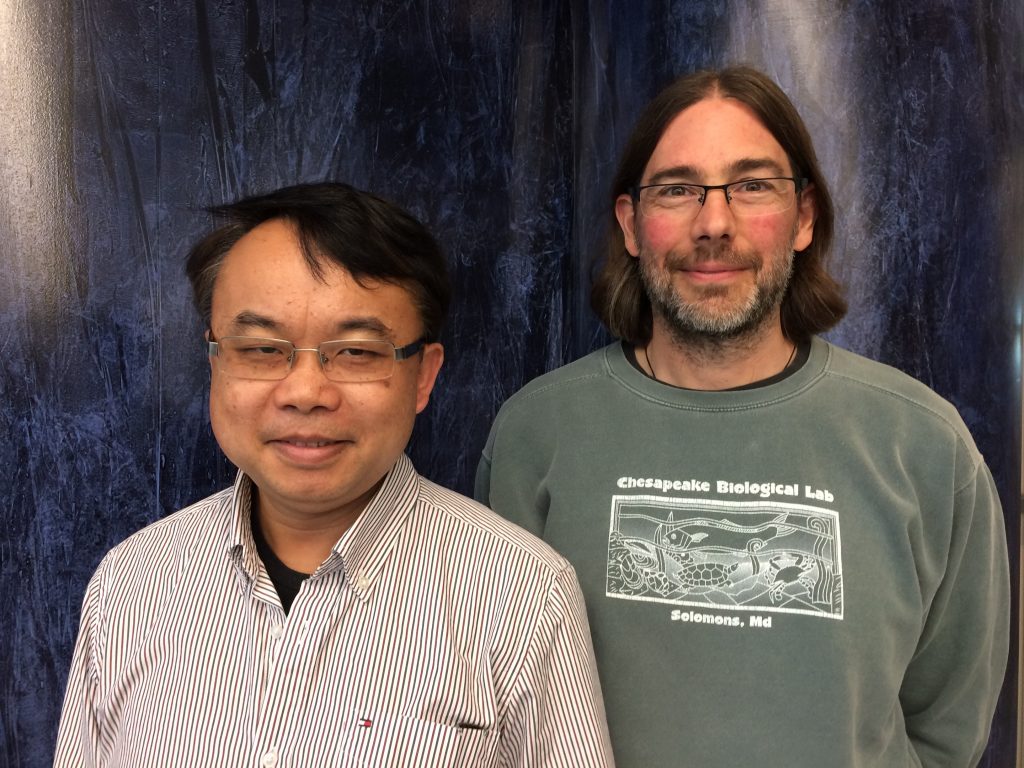Follow along as our scientists conduct research at sea
UMCES-led research cruise explores deep ocean in Atlantic

Scientists seek to better understand the marine carbon cycle and its role in the global climate
A University of Maryland Center for Environmental Science research cruise leaves for the deep Atlantic Ocean 50 miles southeast of Bermuda on Monday for a week of science at sea aboard the 171-foot R/V Atlantic Explorer. Scientists will be sampling the depths of the ocean and analyzing bacterial diversity and function to better understand the marine carbon cycle in the ocean.
“To fully understand the carbon cycle you have to understand what’s happening in the ocean,” said chief scientist Michael Gonsior at the University of Maryland Center for Environmental Science. “80% of organics dissolved in the ocean are unknown on the structural level.”

The team of scientists and graduate students will be collecting water samples at different depths from oligotrophic, deep blue water—every 200 meters all the way to nearly 5,000 meters—from a fixed point in the Atlantic Ocean. The incremental sampling will provide a diversity of marine organisms because the community will change depending on the depths. Then they will use next generation sequencing tools to sequence the genomes of bacterial communities. Their goal: to understand how cyanobacteria contribute to the marine carbon cycle.
The ocean plays an important role in the global carbon cycle. Nearly 50% of CO2 generated by human activities, such as fossil fuel burning, is absorbed by the ocean. Carbon moves in and out of the ocean daily, but it is also stored there for thousands of years. The ocean is called a carbon “sink” because it takes up more carbon from the atmosphere than it gives up.
“This collaborative study will lead to a better understanding on the role of microbial carbon pump processing and transport of recalcitrant DOM into the deep ocean,” said Gonsior. “It has the potential to fundamentally advance our understanding of a presumably important marine CDOM source as well as addressing key issues in marine carbon cycling. We are on the hunt to describe at the structural level the first rather stable fluorescent organic compounds in the open ocean.”

Scientists will be investigating a specific component of organic matter in the oceans called chromophoric dissolved organic matter, or CDOM, which stores some of the ocean’s carbon and also plays a pivotal role in shielding creatures undersea from harmful ultraviolet radiation. In fact, the dark deep ocean holds a substantial amount of this colored material, even though the water appears crystal clear. Sources of this CDOM remain largely unknown, and this project provides a novel path for integrating the chemical property of CDOM with microbial structure and activity.
Preliminary research show that it’s not all from land sources or from the atmosphere, but tiny bacteria called picocyanobacteria may be releasing CDOM into the oceans as a result of a viral interaction. Once researchers return from the cruise, they will investigate how this organic material breaks down and effects microbial communities during this process. The bacterial communities in the ocean are changing, and researchers will be looking at how the changing conditions might be affecting populations and the rate of degradation.
“The goal is to try to understand how bacteria are involved in the degradation of this organic matter,” said co-chief investigator Feng Chen of the Institute of Marine and Environmental Technology, who will be bringing the bacterial samples back to the lab and sequencing their genomes.
The UMCES team includes Associate Professor Michael Gonsior, post-doctoral research Leanne Powers and graduate student Madeleine Lahm; Professor Feng Chen and graduate students Daniel Fucich, Ana Sosa, Menqi Sun;, and Assistant Professor Jacob Cram and research assistant Ashley Collins.
UMCES researchers will be joined by Professor Norbert Hertkorn of the Helmholtz Center for Environmental Health, Munich, Germany and Shannon Leigh McCallister, Associate Professor, Virginia Commonwealth University, and researchers from the University of Delaware.
This is part one of the research project funded by the National Science Foundation. Next year researchers will be exploring what is happening in the Pacific Ocean and what the differences are between the Pacific and Atlantic Oceans.
